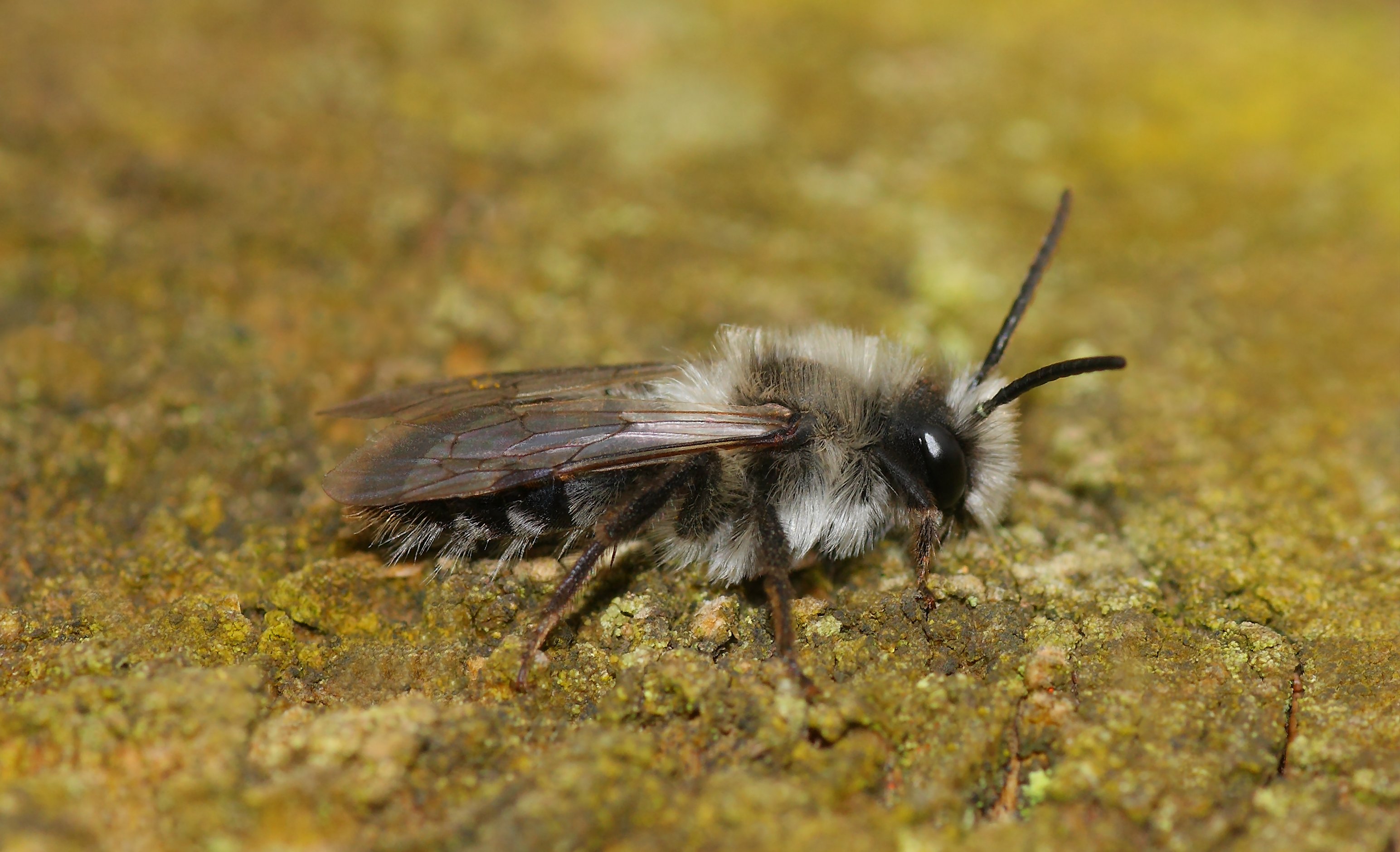DESCRIPTION: Wingspan upto 13mm, males are slightly smaller than females. An eye-catching mining bee with a distinct grey and black appearance. The female has two broad white hair bands across the front and rear of the thorax. The abdomen is very dark and glossy with a slight blue-black hue. The male is less distinctive with an abundance of hairs covering the blue-black body. The faces of both sexes are covered in long white hairs and the eyes are bright shiny black. The third article and forth sections of the antennae are of the same length. BEHAVIOUR: A subterranean nester found in small to large colonies. The burrow entrance is open during foraging trips, but at the end of these flights, during rain or when disturbed the burrows are closed. The species overwinters as adults within the natal cells. This species feeds on a variety of flowers including buttercups, hawthorn, blackthorn, gorse and fruit trees. DISTRIBUTION: Widespread throughout southern Britain become scarcer towards the north however this species is spreading its range. HABITAT: Open sunny areas with sandy ground such as woodland edges, parks, large gardens, riverbanks, coastal sites, moorlands and even golf courses. PERIOD: March to May in southern England, April to June in northern England - the male always emerges before the female. |

